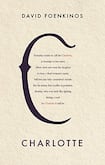
This autumn the Jewish Historical Museum in Amsterdam will mount an exhibition to mark the centenary of the birth of a German artist called Charlotte Salomon. Born during the first World War, Salomon was one of extremely few Jews to be admitted to Berlin's Academy of Fine Arts in the early 1930s. She was then forced to flee to the south of France in 1939, to escape Nazi persecution. Over 18 frenzied months between 1940 and 1942, in a tiny hotel room on a hillside overlooking Saint-Jean-Cap-Ferrat, she painted more than 1,000 pages of pictures and text, telling the story of her short, chaotic life in the form of a Singspeil, or operetta. This densely detailed body of work, Life? or Theater?, is an extraordinary feat of memory, and its creation was a significant act of rebellion against the artist's impending destruction.
Life? or Theater? remained in storage in France for more than a decade before being returned to Salomon's father and stepmother, who had survived the war by hiding in the Netherlands. In an interview with Pariser Journal in 1963 Albert and Paula Salomon spoke movingly about their discovery of Charlotte's magnum opus and what it meant to them to see it setting out on tour around the world. "We believe," her father said, "that her work is valuable for and important to all mankind."
"Charlotte learned to read her name on a gravestone," David Foenkinos's short, odd, intriguing novel begins. It is essentially a retelling of Salomon's story. The author first encountered Life? or Theater? in a museum in Germany in 2004, and he was moved at once to write about it, although several years of lingering obsession had elapsed before Charlotte: A Novel was first published in French, in 2014. "I believe any work of art should reveal its author," Foenkinos writes, and in parallel with the story of Salomon's life Charlotte is an account of his own journey to tell it.
This isn't the first time he's used this narrative device. The Erotic Potential of My Wife and Delicacy, the only other two of his novels available in English, are both witty yet sickly love stories told by a narrator so omniscient as to be annoying. But it's a perfect point of view for Charlotte. As Foenkinos retraces the artist's steps the poignancy of the past is intensified by his discoveries: the apartment in Berlin where the Salomon family used to live is now the headquarters of "a firm that develops websites", and the hotel room in France, which the author imagined "as a paradise, a refuge", is actually "more like a cell" without even a commemorative plaque above the door.
It's a device that allows Foenkinos to draw other stories into Salomon's, such as that of Kurt Singer, the conductor, musician and neurologist who founded a league in the 1930s as a means of protecting his fellow Jewish artists from the rising tide of anti-Semitism. Then there are cameos by Walter Benjamin and Hannah Arendt; the novel is enriched by cultural context in the same way as Salomon sprinkled Life? or Theater? with the popular songs and "degenerate art" that she so loved in her lifetime.
Foenkinos’s prose, exactingly translated by Sam Taylor, has, like the lives it describes, been reduced to its essentials. Each sentence begins on a new line and arrives at its point in the fewest possible moves. The author often turns his questions on the reader: “Where was the logic in his silence?” “But do any words have the power to diminish other people’s hatred?” From its striking first sentence there is no turning away from the abysmal sadness and injustice of the artist’s story.
The catalyst for Salomon to begin work on Life? or Theater? was the death of her grandmother, with whom she was living in exile in France. Marianne Grunwald threw herself from an upstairs window, and in the aftermath of the tragedy Salomon learned that this was the eighth member of their family to die by suicide. Overcome by the secrets of the past, the horrors of the present and the crippling uncertainty of the future, she saw no alternative but to immerse herself in a project. In the Jewish Women's Archive she is quoted as saying, "I will create a story so as not to lose my mind." "To survive," Foenkinos puts it, "she must paint her story," and this is the major theme of his novel: art as salvation. Charlotte Salomon died in Auschwitz on October 10th, 1943. It's likely that the final line of text she ever read had an uncanny resonance: the slogan, on the gates of the camp, "Work sets you free."
Foenkinos’s fine novel is a further step toward ensuring that the artist’s work has also immortalised her, a far superior tribute to any commemorative plaque.
Sara Baume is the author of Spill Simmer Falter Wither and A Line Made By Walking, published on February 16th









